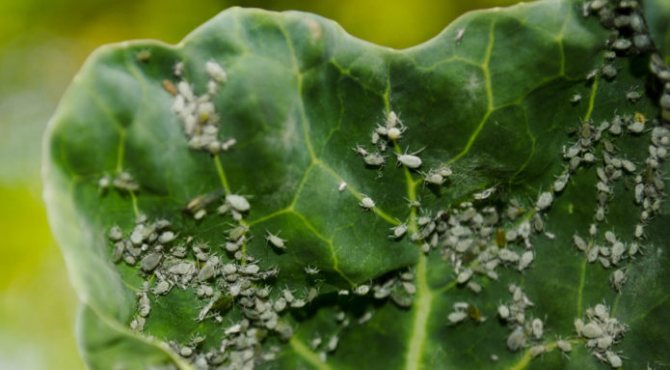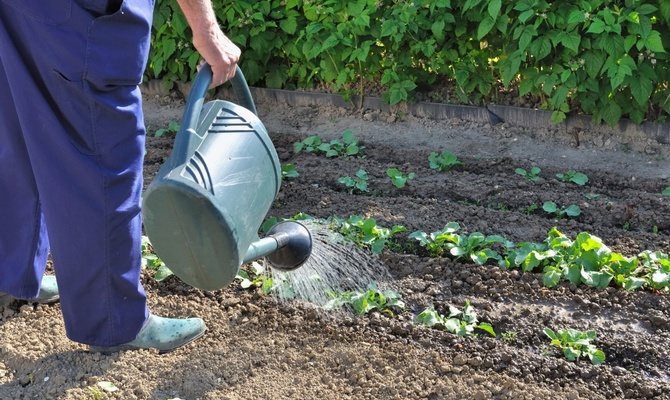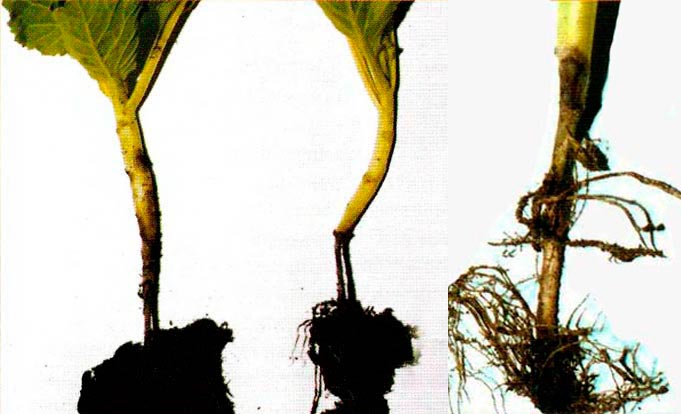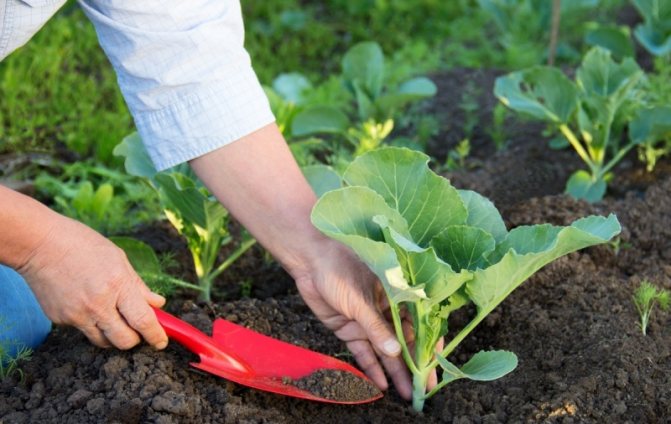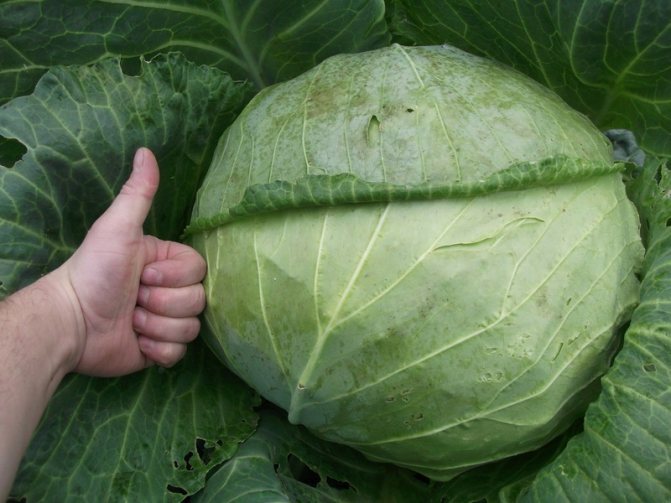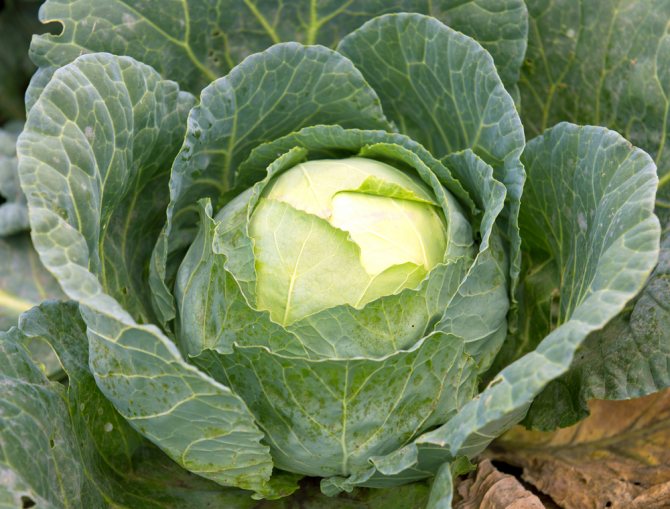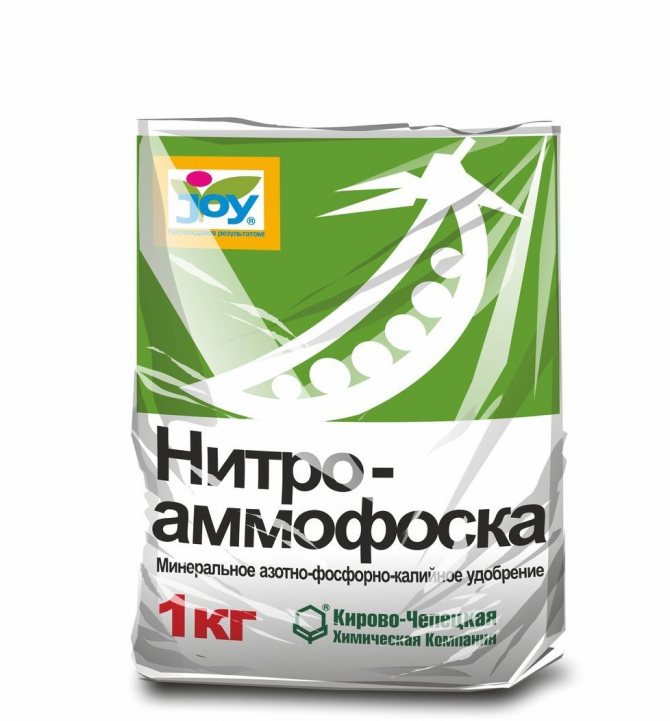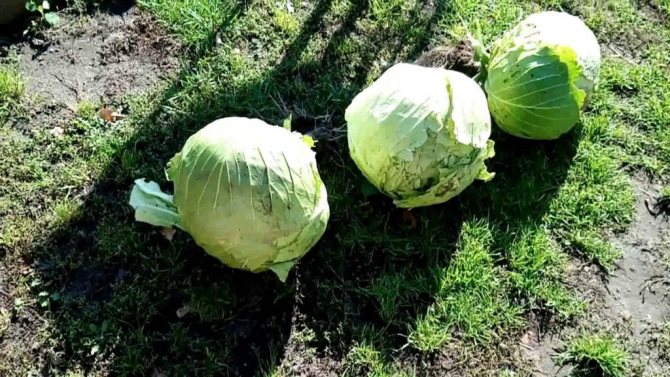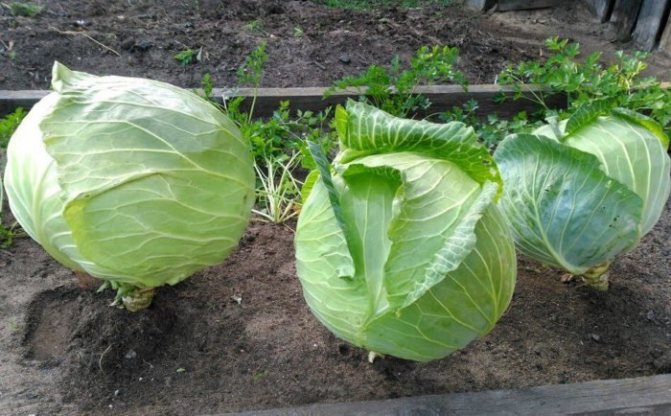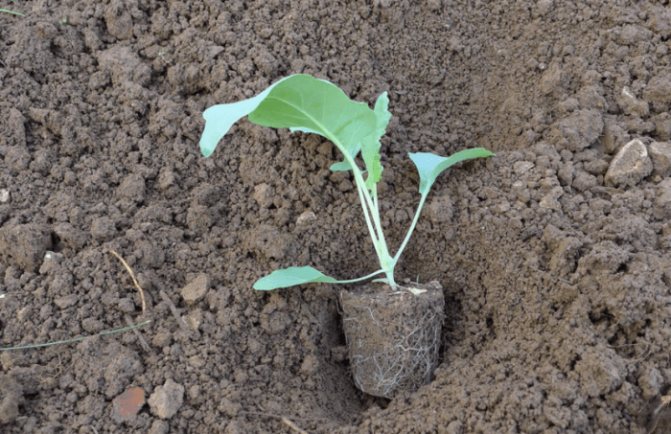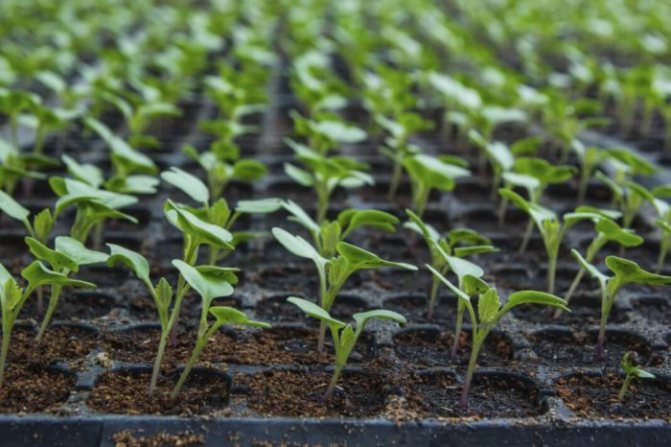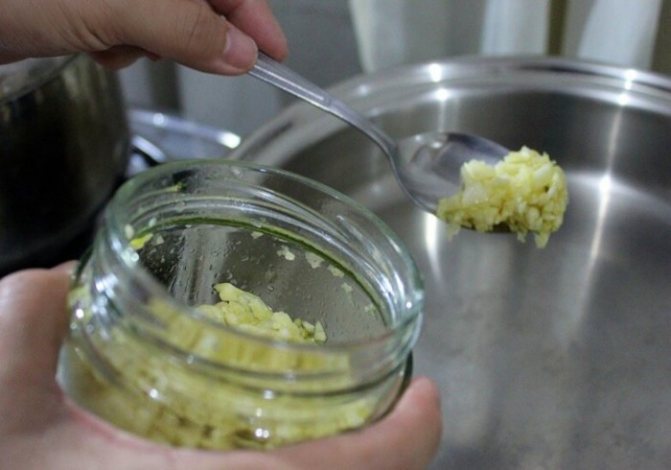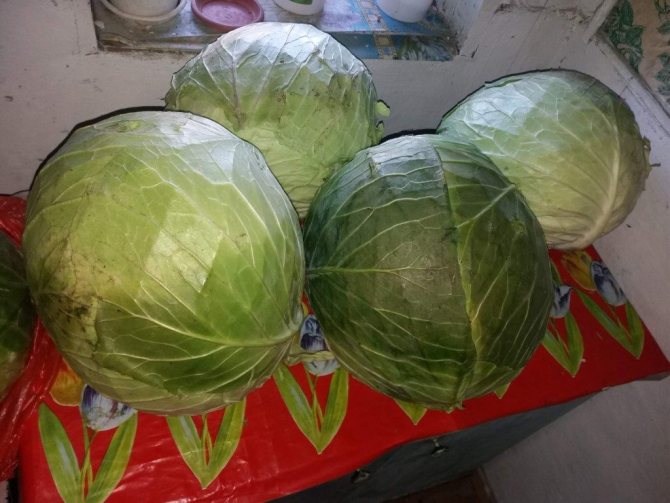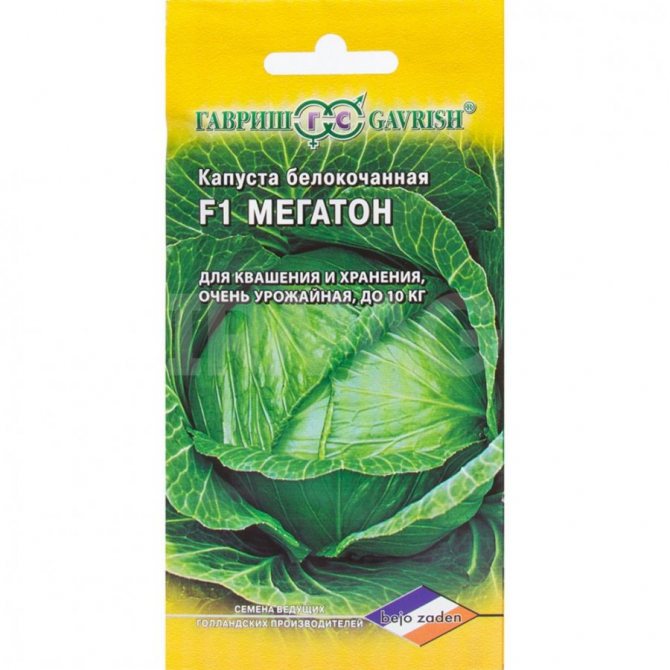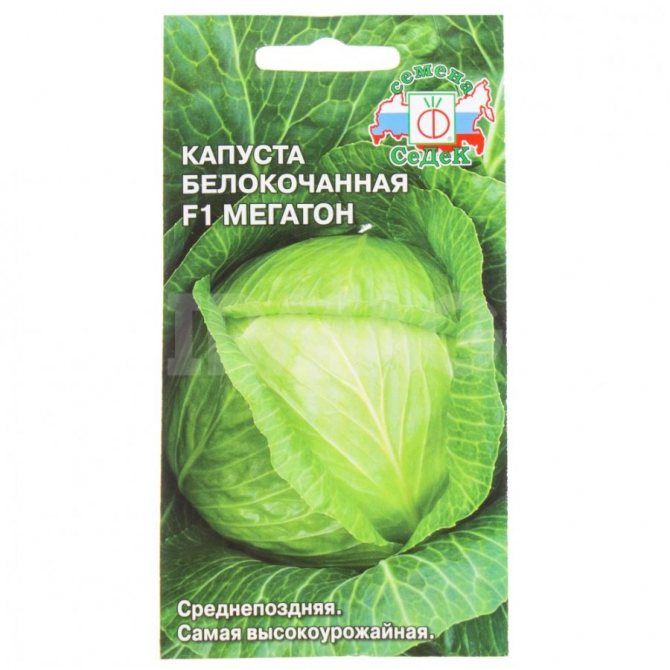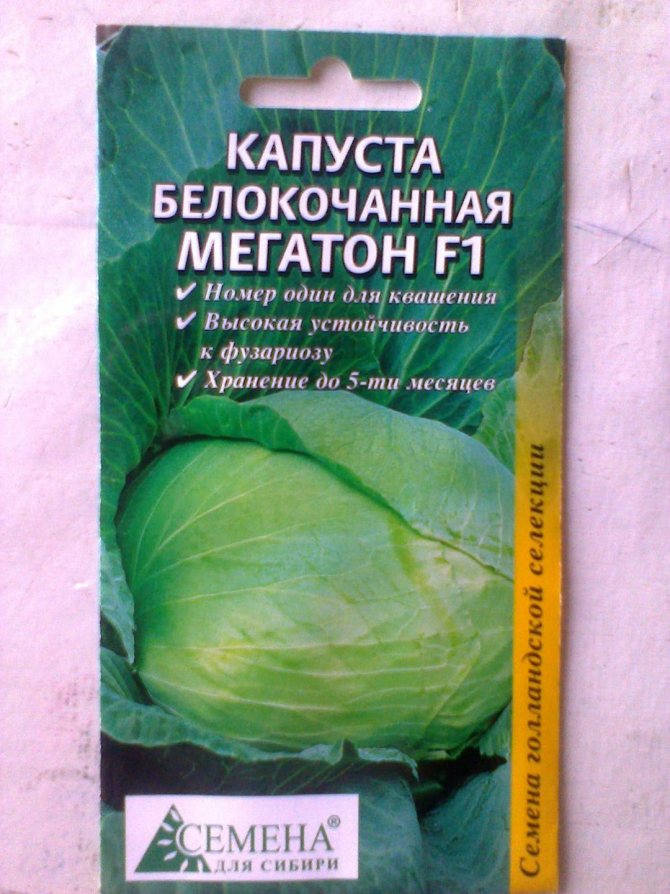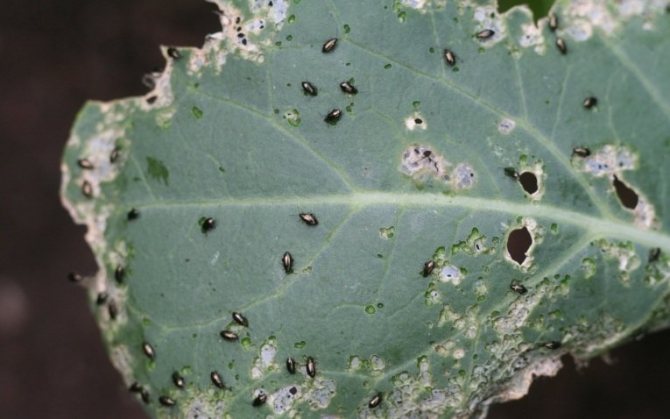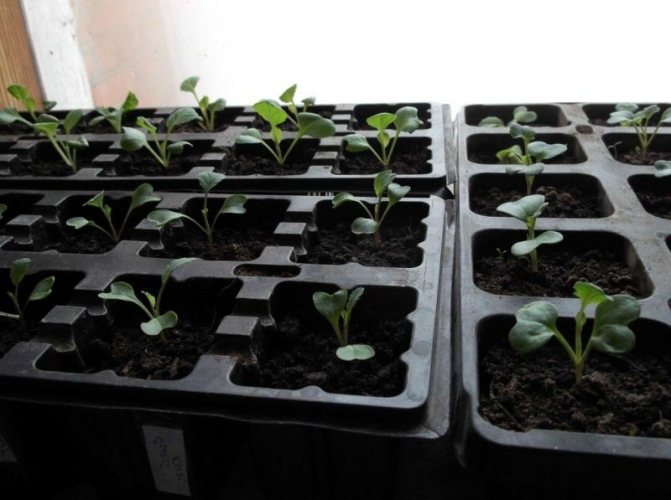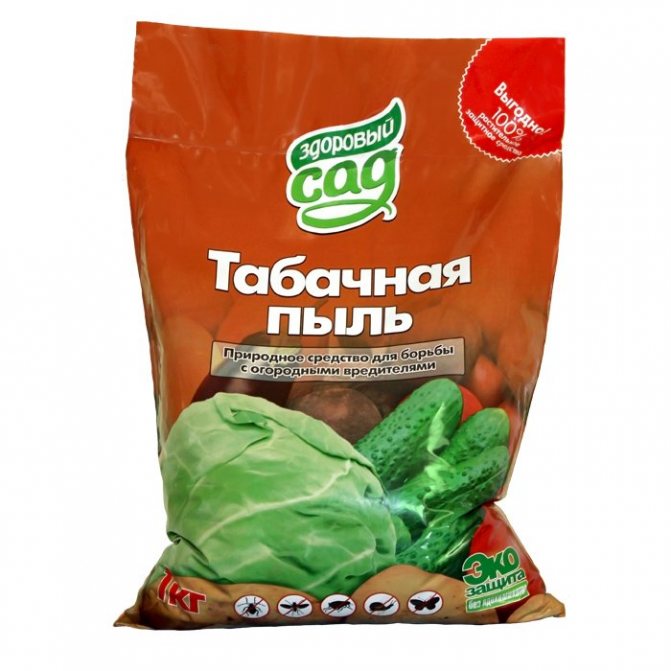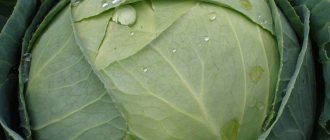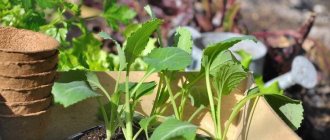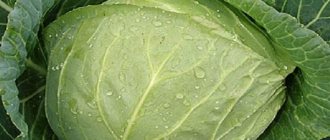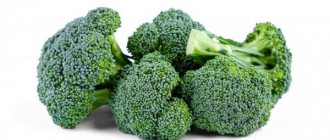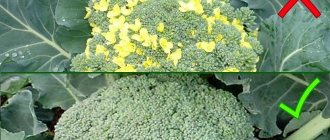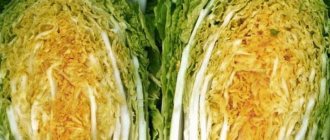Vegetable growing »Cabbage
0
759
Article rating
White cabbage Megaton belongs to high-yielding varieties. The fruits of the plant are large in size, the variety is resistant to diseases.
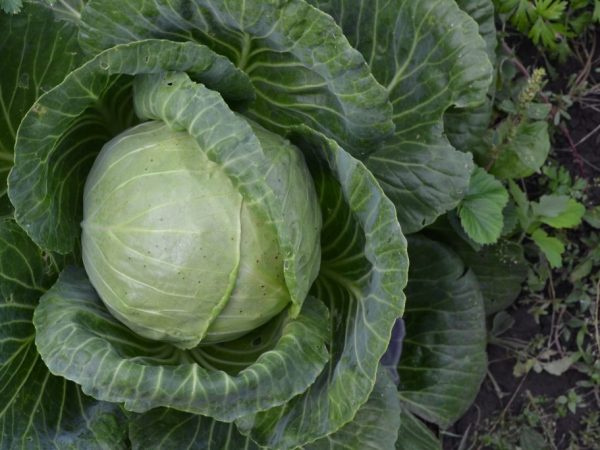
Characteristics of white cabbage variety Megaton
An excursion into history
The first to give a description of the Megaton cabbage variety were its creators - Dutch breeders from the seed company Bejo Zaden. They managed to get such a hybrid of white cabbage, which combines in its characteristics the needs of many agricultural producers:
- large and resilient heads of cabbage;
- high immunity to diseases and pests;
- ability to withstand adverse weather conditions;
- average ripening times;
- the ability to keep the harvest for a long time.
On the territory of Russia, the variety has been allowed for cultivation since 1996, after being included in the State Register. Megaton cabbage is not recommended for cultivation in some regions of the Middle Volga region:
- Republic of Mordovia;
- Tatarstan;
- Penza region;
- Samara region;
- Ulyanovsk region.
Gardeners who have been growing Megaton white cabbage for more than one year, in their reviews give breeders from Holland "five".
Description of cabbage variety
When choosing seeds for planting white cabbage, vegetable growers pay attention to the description of the variety, especially the cultivation. Any details are important to them. Let's take a look at these questions.
Cabbage variety Megaton F1, according to the characteristics and reviews of gardeners, is mid-season. From the moment of sowing seeds to technical maturity, it takes from 136 to 168 days.
The leaves of the Dutch hybrid have large rosette sizes. They can be horizontal or slightly raised. The edges of large, rounded leaves are concave with noticeable waviness, light green, matte due to a waxy coating. The integumentary leaves are wrinkled.
The forks are large, round and dense in structure. Many gardeners, noting this feature, write in reviews that the white cabbage Megaton F1 in technical maturity is solid as a stone.
On a small internal stump about 15 cm long, heads of cabbage weighing 3-4 kg grow. But with good care, compliance with all agrotechnical standards, some gardeners receive forks of 10-15 kilograms. On the cut, the cabbage is snow-white, as in the photo below.
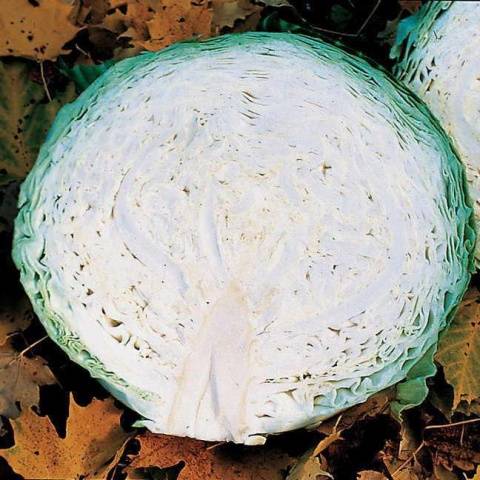

White cabbage Megaton, according to the description of the variety, reviews of gardeners who have been growing for a number of years, is very tasty and healthy. It contains a large amount of substances necessary for a person. Here are some figures for 100 grams of raw cabbage:
- protein - 0.6-3%;
- ascorbic acid 39.3-43.6 mg;
- sugar from 3.8 to 5%;
- dry matter from 7.9 to 8.7%.
Characteristics of cabbage
Although not much time has passed since 1996, the Megaton F1 cabbage variety is loved not only by gardeners, but also grown on a large scale by Russian farmers for sale.
Let's find out what are the benefits of this white vegetable:
- Excellent taste, cabbage is notable for its juiciness and crunchiness, most of all the hybrid is suitable for pickling.
- The variety is high-yielding, from 586 to 934 centners can be harvested per hectare.
- Megaton F1 is resistant to many diseases, from which other varieties and varieties of cabbage usually suffer: fusarium wilting, keel, gray rot. Some pests also "bypass" the forks.
- Unfavorable weather conditions do not negatively affect the quality of heads of cabbage and yield: prolonged rains do not lead to cracking.
- White cabbage is appreciated for its portability and storage ability after cutting for three months.
We have considered the positive aspects, but the white cabbage Megaton F1 also has some disadvantages:
- in the first days after cutting, the leaves of the variety are harsh;
- the presence of a large amount of sugar does not allow cooking salads and cabbage rolls from the leaves;
- many gardeners are confused by the short, in their opinion, shelf life.
If you look at the ratio of pros and cons, then you should buy seeds and try to grow Megaton F1 cabbage on your site.
Diseases and pests
According to the characteristics, Megaton F1 cabbage is resistant to gray rot, keel, fusarium wilt, but it needs preventive measures against black leg, powdery mildew and rhizoctonia disease. These include dressing the seeds before planting. To prevent the defeat of the culture with a black leg, use the drug "Tiram". It is introduced into the soil, the consumption is 50 g per 1 sq. m.
Garlic infusion is prepared from powdery mildew. For this:
- chop 100 g of garlic;
- add 10 liters of water;
- insist 12 hours.
Before planting, for the purpose of prophylaxis, the drug "Quadris" or "Hom" is introduced into the soil. This prevents the development of rhizoctonia. With the development of diseases, the affected leaves are torn off and burned.
Also, cabbage is affected by a number of pests:
- Cabbage moth. They are fighting it with the help of the drug "Lepidocyte". It is added in an amount of 20-30 g to 10 liters of water.
- Cabbage aphid. Against her, use the "Decis-Profi", which is dosed according to the instructions.
- Whitefly. "Aktelik" helps against this pest. In 1 liter of water, dissolve 1 ampoule of the substance.
- Medvedka. They use the Medvetox remedy against it. It is applied between the rows to a depth of 3-5 cm. Consumption - 2 g per 1 sq. m.
For the prevention of pest damage, mixed plantings are made. Marigolds and spicy herbs scare away insects.
How to grow seedlings
If you have made your choice, buy Megaton cabbage seeds only in specialized stores. In this case, you can be sure of quality and germination. After all, seeds, unfortunately, are not cheap.
Important! Gardeners note in reviews that the quality of the seeds of this variety in special packages is excellent, as a rule, every 10 seeds sprout to one.
So, the seeds are purchased, you need to sow seedlings. The fact is that Megaton cabbage, according to the characteristics and description, is grown only in seedlings. Since the variety is medium late, the seeds for seedlings are sown in late April, early May.
Preparing seeds for planting
To grow healthy seedlings of Megaton cabbage and get tight heads of cabbage, and not shaggy "brooms", the seeds should be specially prepared.
Let's consider the stages:
- The water is heated to 50 degrees and the seeds are lowered for a third of an hour. It is best to put them in a cloth bag. After that, they are transferred to cold water.
- The next step is to soak in Epin or Zircon for a few hours. You can also use nitrophoska solution for soaking. After the procedure, the seeds must be rinsed with clean water and dried.
- The seed should be hardened three days before sowing. The ideal place for this is the bottom shelf of the refrigerator. This procedure will increase the resistance of plants to light frosts.
Comment! The seedling method not only increases the yield of cabbage beds, but also accelerates the maturation of heads of cabbage in the open field.
Sowing seeds and caring for seedlings
Fertile soil is poured into the seedling box and mixed with wood ash. Pour boiling water over the soil, dissolving potassium permanganate in it.When the soil cools down to room temperature, grooves are made in 6-7 cm increments. Seeds are placed in them at a distance of 3-4 cm, to a depth of 3 cm. If the picking of seedlings is not included in the plans, the distance between future seedlings should be increased. A film is pulled from above to speed up the shoots.
Typically, cabbage seeds sprout in 3-4 days. Since the seedling box is outside, the film or glass is not removed to keep warm inside. On hot days, the shelter is raised so that the seedlings do not burn out, and there is access to fresh air.
Attention! A box for cabbage seedlings is installed in an open place so that the sun falls on it throughout the day.
During the growth of seedlings, it must be watered with warm water, weeds are weeded. It is useful to sprinkle the small cabbage with wood ash. She scares off the cruciferous flea.
Many gardeners dive seedlings into separate containers. This work should be done when 2-3 true leaves are formed. The soil is selected fertile, treated with boiling water.
Having taken out the plant from the nursery, the root is cut by a third. This will ensure the development of a fibrous root system. The planted cabbage of the Megaton F1 variety can be placed in a greenhouse or under a temporary film shelter. The main thing is that there is good lighting, and at night the plants do not get frost.
The first weeks of cabbage seedlings require special attention. It is necessary to constantly loosen the soil, remove weeds, and water sparingly. After all, it is at this time that the future harvest is formed. Only strong seedlings will be able to set tight heads of cabbage.
Bedding
Before planting in open ground, the seedlings should be tall (15 to 20 cm), with a thick stem and 4 to 6 leaves. Megaton cabbage is planted around the end of May. Although the timing is approximate, it all depends on the climatic conditions of the region.
Attention! Strong seedlings of Megaton cabbage can withstand night frosts down to -3 degrees.
Ridges for planting cabbage varieties Megaton are prepared in the fall, choosing an open, sunny place for this. It is important to remember that cabbage is not grown on the ridges where cruciferous plants grew. It is best to plant cabbage after legumes, carrots, onions. In the fall, the ridges are cleaned of plant residues, rotted manure is added (you can use mineral fertilizers) and dug up.
In the spring, you can not dig up the soil, but immediately make holes at a distance of at least 50-60 cm between the plants. For ease of care, Megaton cabbage, according to the description of the variety, is planted in a two-row way, as in the photo below.
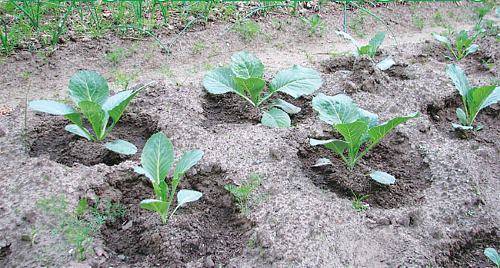

Comment! The wells are poured with hot water with potassium permanganate (from the black leg) and a handful of wood ash is added.
Plants are removed from the ground, carefully inserted into the hole, directing the roots straight down. When the seedlings are covered with earth, they are guided by the first real leaf. It should rise above the surface. Immediately after planting, the cabbage is watered.
Accommodation on the site
For the optimal location of cabbage ridges, a site is chosen where cruciferous crops have not been cultivated earlier (2-3 years) - cabbage, turnips, radishes, etc., since the long-term use of a place for growing representatives of one family provokes the accumulation of specific diseases and soil depletion. In addition to the correct crop rotation, illumination is of great importance.
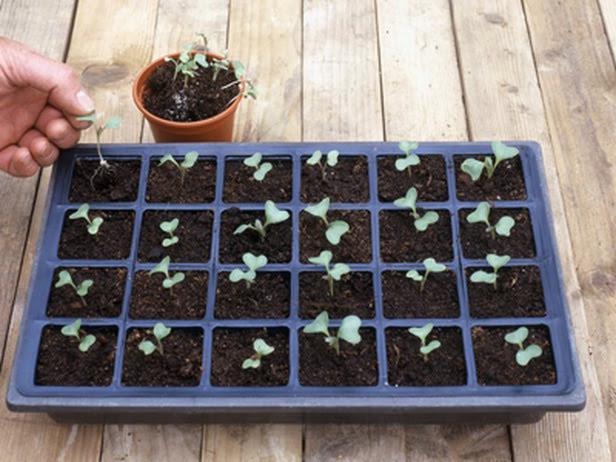

Bright, sunny and well-ventilated places are perfect for growing this healthy vegetable.
Cabbage care
Further care for the Megaton variety is:
- In abundant watering. At least 15 liters of water are poured onto the square, especially in dry summers. But you should not overmoisten the soil so that the roots do not rot. It is useful in dry weather to use a sprinkler for watering Megaton cabbage (turntables are sold in all stores).
- In weeding, loosening and hilling up to the closing of the lower leaves and mulching with peat.
- In regular feeding. For the first time, the cabbage is fed immediately after planting in the ground with potash fertilizers and saltpeter. The second feeding with already nitrogenous fertilizers falls on the moment the fork is formed. The third - after 21 days with nitrogen-containing and phosphorus fertilizers. When using mineral fertilizers, carefully read the instructions for use.
- In the fight against pests and diseases. Although according to the description, as well as, according to gardeners' reviews, the Megaton cabbage variety is resistant to many diseases and is almost not affected by pests, preventive treatments will not interfere. After all, as a rule, one variety of cabbage is not limited. From such pests as cabbage aphid, whitefly, cabbage moth, the immune system is unable to cope on its own. And spores of fungal diseases can get on the site with rain or wind.
Megaton cabbage is harvested after the first frost. Until this time, the leaves should not be torn off, so as not to reduce the yield of the beds. By the time of cutting, the cabbage becomes tight, barely holding on to the stump. Sometimes you have to put something under it.
A white-headed vegetable is cut in dry weather, the leaves are torn off and laid out in the sun to dry. The cabbage is stored before pickling in a place protected from rain and frost. Our readers are often interested in how long it takes to salt Megaton cabbage. If you re-read the description of the variety, then it clearly states that immediately after cutting the leaves are harsh. By the time they are salted for the winter, they will just arrive in time.
About Megaton cabbage:
All about dressings
As an aid to a novice vegetable grower, we present a fertilization scheme. By adhering to the recommended scheme, you can guarantee a high yield of healthy heads of cabbage. Cabbage leaves will not contain nitrates harmful to humans.
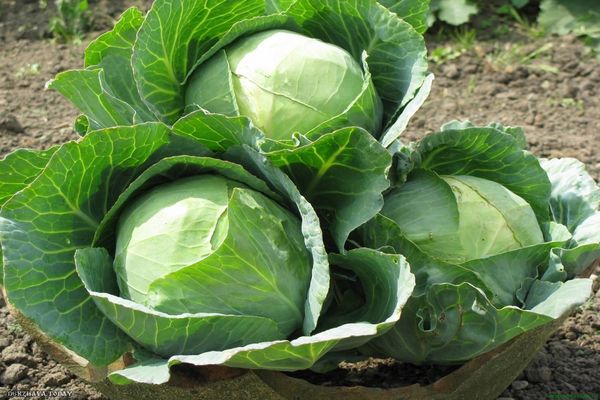

After 7 - 10 days after picking cabbage, we carry out the first feeding. In 7 days, young cabbage will have time to adapt, the roots will begin to grow, actively supplying the plant with nutrients.
Watering 55 bushes will require one liter of an aqueous solution of fertilizers. For cooking you need to take:
- potassium nitrate - 2 g;
- superphosphate - 4 g;
- ammonium nitrate - 2 g.
When 14 days have passed after the first feeding, the grown cabbage seedlings will need to be fed for the second time. For the same liter of water, take the same set of fertilizers, increasing the content of each component by 2 times.
If there is fresh manure, it is better to replace the mineral fertilizer solution with mullein infusion. For watering cabbage, an aqueous solution is prepared in the ratio of 1 part of the infusion to 10 parts of water.
Two days before the transplant, the cabbage seedlings are fed for the last time. Fertilizer rate for the third top dressing:
- ammonium nitrate - 3 g;
- potash fertilizer - 8 g;
- superphosphate - 5 g.
See also
How to Treat Cabbage Pests with Vinegar to Get Rid of ThemRead
To prepare the solution, we take 1 liter of settled water.
In the summer, it is enough to feed the cabbage 2 times. The first time the cabbage takes root after transplanting. You can understand that the vegetable has taken root by the leaves - they will grow. At this time, use 10 liters of nutrient solution for 5 cabbage roots. The first feeding is purely nitrogen - ammonium nitrate 10 g per 10 liters.
When the leaves begin to curl into the head of cabbage, the cabbage must be fed a second time. Fertilizer consumption is given for 10 liters:
- urea - 4 g;
- potassium sulfate - 8 g;
- superphosphate (double) - 5 g.
Hybrid care Megaton is standard. Watering will be an important part of all summer work. From transplanting seedlings into the ground to the moment when the leaves begin to curl, water 2 - 3 times a week. If the weather is rainy, less often. The main reference point is soil moisture.

